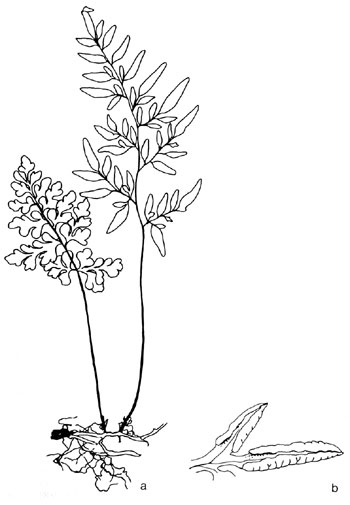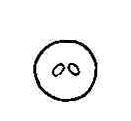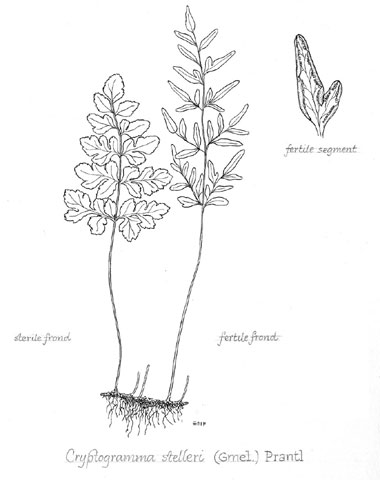|
Hardy Fern Home C. stelleri resources All Ferns � Pteridaceae �� Cryptogramma
�Other Genera
|
| Cryptogramma stelleri | ||
Slender rock-brake,Slender cliff-brake,Steller's rock-brake,Fragile rock-brake | ||
|
Etymology
Stelleri is named after the 18th Century naturalist George Wilhelm Steller, who accompanied the Bering expedition of 1741 and lent his name to several northwestern species.
Description
Rhizome: long-creeping, seldom branching, succulent, brittle, scales colorless, sparse, transparent, netted, ovate.
Frond: 18 cm high by 5 cm wide, deciduous, dying by late summer, dimorphic, the sterile fronds shorter than the fertile ones, blade/stipe ratio: 1:3 to 1:1. Stipe: brown at base, then green, glabrous, vascular bundles: 2. Blade: 2-pinnate fertile fronds, the sterile less, lanceolate, herbaceous, bright green, thin-textured, glabrous. Pinnae: 4 pair, lanceolate, 1-2 cm, the fertile ones contracted; margins entire, inrolled on fertile segments; veins free, forked. Sori: elongate, submarginal, indusium: false, strongly enrolled, sporangia: yellow, maturity: midsummer. Culture
Habitat: moist, shaded, calcareous rocks and cliffs at higher altitudes or latitudes.
Distribution: Siberia to China, Japan, Himalaya, Taiwan, Europe, northeastern and northwestern North America, disjunct at several locations in the Rocky Mountains.
Hardy to -40�C, USDA Zone 2, requires a cool summer.
Distinctive Characteristics
Ephemeral, dying back in summer, fragility, and the long-creeping stem contrasts with other Cryptogramma.
Synonyms
Pteris stelleri S. G. Gmelin |
|
|

Cryptogramma stelleri. a) sterile, left and fertile, right fronds; b) fertile pinnule. �Illustration by V. Fulford from Ferns and Fern Allies of Canada, William J. Cody and Donald M. Britton, 1989, � Agriculture Canada. |

Cryptogramma stelleri. Two oblong vascular bundles at a 90� angle throughout the length of the stipe. �Drawing from Ferns of Northeastern United States, Farida A. Wiley, 1936. |
